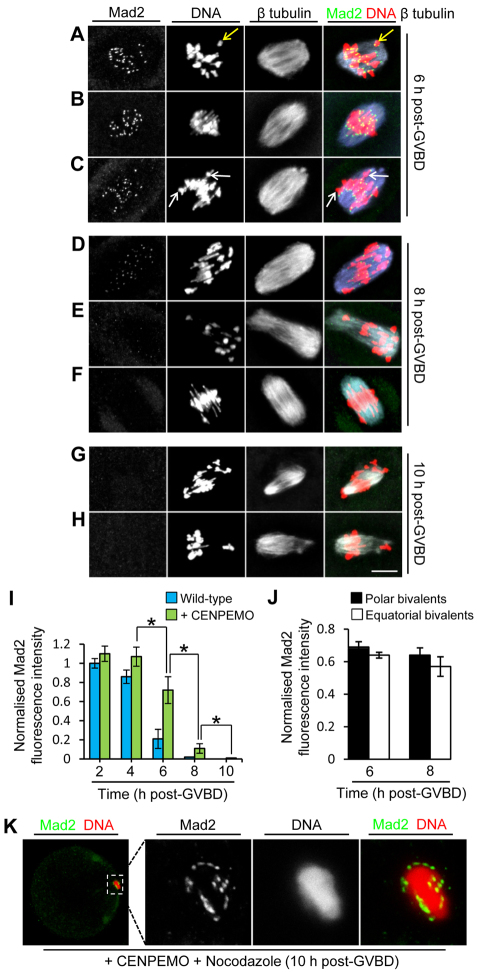Fig. 3.
CENP-E-depleted kinetochores become devoid of Mad2 in spite of polar displacement. (A-C) By 6 hours post-GVBD, most kinetochores retain Mad2 that is equally prominent at equatorially located bivalents (B) as at polar-displaced bivalents regardless of whether bivalents are compact (yellow arrow, A) or extended (white arrows, C). (D-F) By 8 hours post-GVBD, low Mad2 levels are detectable in some oocytes (D), but Mad2 is undetectable in others (E,F). Where Mad2 is detectable, there is no discernible difference between equatorial and polar bivalents (D). (G,H) By 10 hours post-GVBD, Mad2 is completely undetectable, including at severely poleward-displaced bivalents. (I,J) Kinetochore Mad2 levels in wild-type and CENP-E-depleted oocytes (I) and at polar and equatorial bivalents in CENP-E-depleted oocytes (J). Intensities were normalised either to values at 2 hours post-GVBD in wild-type oocytes (I) or to maximal intensities in individual oocytes (J). Data are mean ± s.e.m.; *P<0.05 by Student’s t-test). (K) Mad2 becomes re-recruited in CENP-E-depleted oocytes treated with nocodazole. Scale bars: 10 μm.

